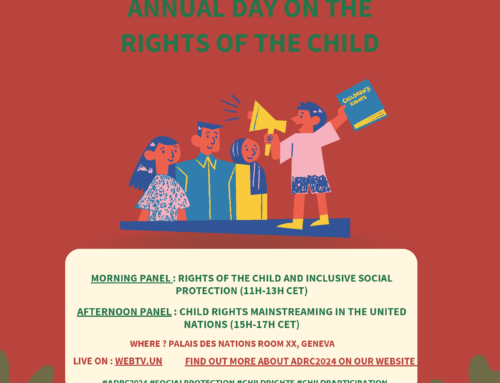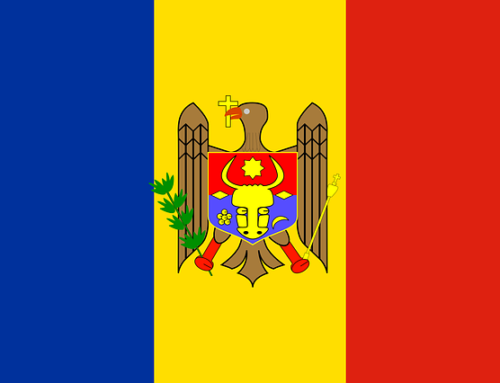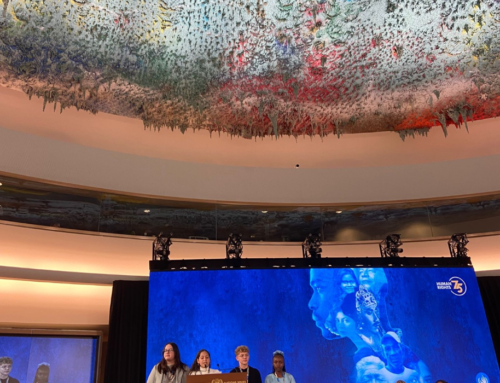Who are child human rights defenders? Why is it important to recognise CHRDs? What is different for CHRDs? What can you do? The Implementation Guide on the Rights of Child Human Rights Defenders provides responses to these questions and more.
The 2018 Day of General Discussion of the Committee on the Rights of the Child on “Protecting and empowering children as human rights defenders” shed light on the generalized lack of understanding of the rights of child human rights defenders (CHRDs) and identified major protection gaps at all levels. At an expert meeting in 2019, Child Rights Connect together with the Committee on the Rights of the Child (CRC Committee), the Special Rapporteur on the situation of human rights defenders (SR on HRDs), many other experts and CHRDs themselves, agreed that there was the need to develop technical guidance on the rights of CHRDs, hence the Implementation Guide on the Rights of Child Human Rights Defenders, which clarifies:
- the definition of “child human rights defender”,
- what is distinctive about CHRDs and the contexts in which they act,
- the rights that CHRDs are entitled to and how these must be respected, protected and fulfilled at all levels through the coordinated implementation of the Convention on the Rights of the Child and the UN Declaration on human rights defenders.
“[CHRDs] are protagonists in the fight for their rights and we – adults and institutions – must respect them, accompany them and empower them.” explains Luis Pedernera, Chairperson of the CRC Committee, in the preface of the Guide.
“We need to move from a discourse that is based on permission – we allow children to act as human rights defenders – to a recognition of a child rights-based focus – that they are entitled to act as human rights defenders. We must stop asking the questions: when can they? At what age should we let them join an association, attend a protest and access social media? The question should be: how can they? How can civil societies and other actors support children and enable children to exercise the full range of civil and political rights? We need to reframe our thinking… and this is what I hope the Guide does” explained Laura Lundy, author of the Guide during its launch.
The Implementation Guide provides recommendations for States, parents/ guardians, schools and other public service providers, national and international human rights organizations, civil society organisations and CHRDs themselves. At the launch of the Guide, CHRDs and partners highlighted how useful the Guide will be in their respective roles:
“This document is especially significant for children globally, as it will not only protect children fighting for a brighter future but will also allow them to be encouraged and feel safe in the efforts for peace.” said Reece, a CHRD from South Africa.
Mary Lawlor, the SR on HRDs, added: “The Guide shows that more linkages should be built between the work of human rights defenders and child rights, including the strengthening of linkages between the two communities: cooperation with the mandate would be a good opportunity for this, I believe.”
“[The Guide] assists and it honors those children who make a special contribution to the rights of the child. At UNEP, We’re really looking forward to using this guide as a tool to inform the implementation of our own organizational policy that seeks to promote greater protections for environmental human rights defenders, and to empower child environmental rights defenders.” said Angela Kariuki from the United Nations Environmental Programme.
“While the Canadian guidelines [on human rights defenders] don’t specifically cover child human rights defenders, we will advocate to ensure that the rights of the child are respected, protected and fulfilled and that voices of children are heard, that they’re empowered, including through following guidance in this implementation guide that we are discussing today, that we find is a very valuable and useful tool, … that fills a much needed gap” said the representative of the Permanent Mission of Canada.
The Guide is the result of a year-long consultative process and has been developed in collaboration with Queen’s University Belfast, the CRC Committee, the SR on HRDs, many experts and CHRDs, including the Children’s Advisory Team of Child Rights Connect that is developing the child-friendly version of the Guide, which will be published in 2021.
“…this publication is a very good example of how different UN Human Rights mechanisms or UN entities, as well as committed civil society organizations and academia, can effectively work together to shed the light on implementation gaps in the realization of children’s rights and put the recognition and support of child human rights defenders on the agenda.”, welcomed the representative of the Permanent Mission of Switzerland.
As next steps, we invite you to use the Guide to learn more about what you can do to strengthen the protection and empowerment of CHRDs and disseminate it among all relevant stakeholders who can play a role! Based on the Guide, we will also be looking at developing, together with partners, complementary guidance on certain areas that require further understanding on what should be done in practice: restrictions on rights, CHRDs operating online, participation in public affairs or policing protests.
Read the Implementation Guide here and its quick introduction here. After accessing the guide, please kindly fill in this feedback survey so we can get your views on the tool and learn about how you plan to use it!











Leave A Comment